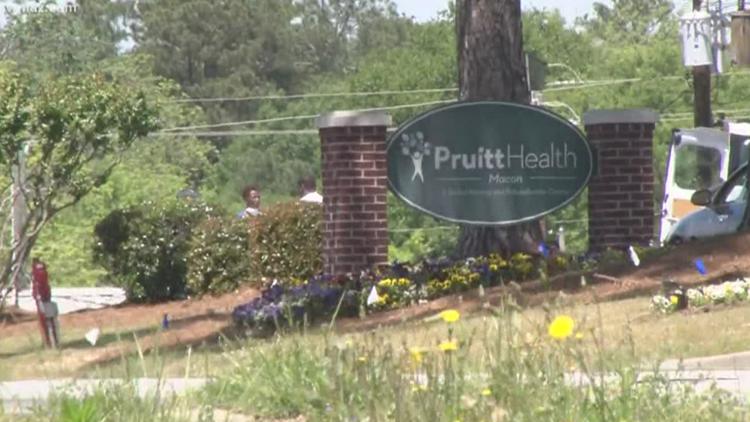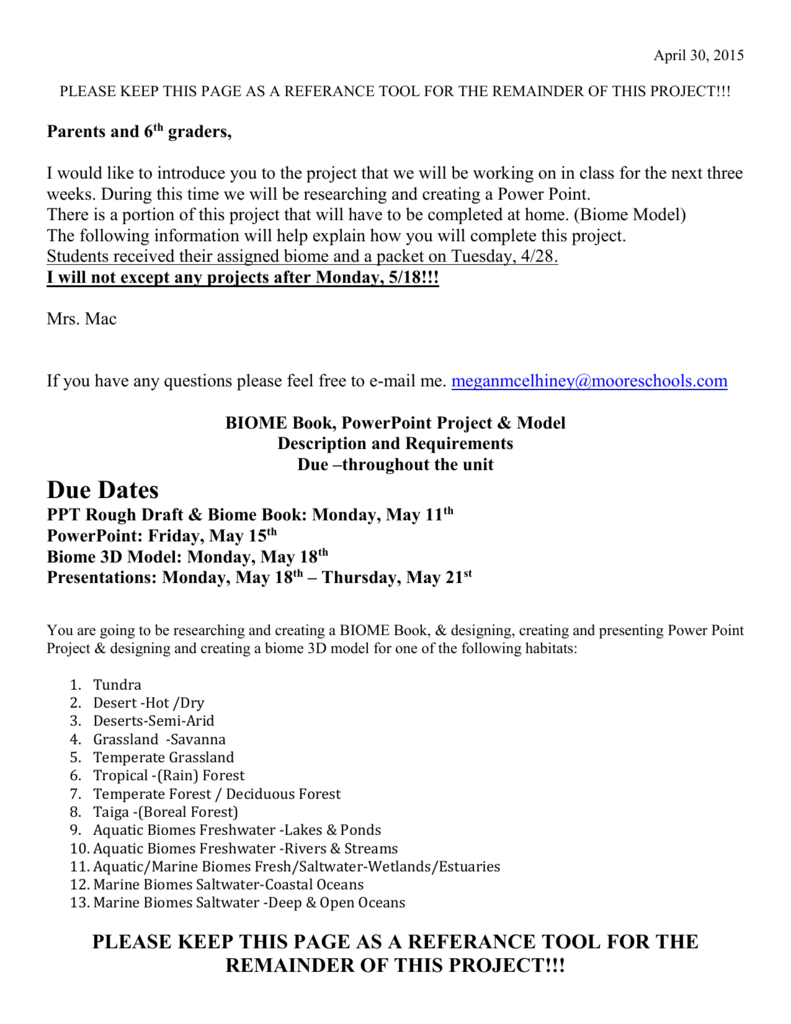In this lesson, students learn about the five biomes as they create a promotional travel brochure that provides information and an itinerary for a visit.
- Every living thing on planet Earth is connected to other living things. In this unit we will be looking at the connections we find around us. For example, we will be looking at how a food web can tell us information about an animal, how limiting factors can create chaos in a biome, and what biomes actually are.
- Our Biomes and Ecosystems lesson plan discusses the difference between an ecosystem and biome but also introduces students to the connections between the two components of the environment. The lesson also introduces students to the various interactions within an ecosystem.
- A cute Christmas paper experiment (3rd grade) Biomes Project (6th Grade) November (5) October (10) About Me. Scienceignasiperaire View my complete profile.
- Ecosystem Quiz 6th grade DRAFT. Ecosystem Quiz 6th grade DRAFT. Played 107 times.
Apps: Pixie®, Wixie®
Task
More and more people are deciding to spend their vacation time travelling to far away places. As a result, a local travel agency wants to offer biome vacation packages. The owner has asked for your help to create brochures that entice its customers to take a tour of a biome.
Unit 6: Biodiversity and Human Impact on Natural Resources Looking Ahead to 7th Grade Powered by Create your own unique website with customizable templates.
Engage
Complete a Biomes KWHL chart as a class to get students thinking about biomes that exist around the world, activate prior knowledge, and assess what students already know about biomes.
Using your text book, online resources, and videos to introduce students to the different biomes found on Earth.
Creative sound blaster x-fi go driver. Once students have a foundational understanding about all of the biomes, group students into teams of 3-4. Assign each team the task of creating a travel brochure for a tour through a specific biome.
Have student teams research the following questions about their biome:

- Where does the biome exist?
- What plants and animals live in the biome?
- What is the climate like in the biome?
- What food chains exist in the biome?
- What landforms exist in the biome?
- What places of interest are found in this biome?
- What makes this biome interesting to visit?
Create
When each group has collected a solid amount of information, ask them to complete a Venn Diagram comparing life in that time and place to life now. This will help you identify misconceptions and will help them identify unique features of their biome to include in their brochures.
You can have student teams use other graphic organizers before they begin writing to:
- explore ways their audience might feel with a fact vs. opinion chart.
- determine what information to share or skip with a pros vs. cons chart.
Give students time to complete additional research as they begin to organize their information.
Have students use create an itinerary, brochure, or even a advertisement for a tour of their biome. For example, a biome advertisement could include:
- A map of where this biome exists.
- Landforms that exist in the biome.
- Student-drawn pictures.
- Information about the biome’s climate.
- Examples of food chains which exist within the biome.
- Places a visitor should be sure to see.
- Reasons and stories that illustrate why people should visit this biome.
Have students use a publishing tool to combine their text and images and print their travel brochures.
If you have access to a digital tool like Wixie, you can print the brochures or share student work digitally in PDF form or online through a URL. This allows them to create vivid travel “infomercials” with culturally appropriate sounds and voice narration!
Share
Print the brochures and display them to celebrate student effort and take a jigsaw approach to learning so that each group is responsible for helping other students learn more about the specific biome in their project. You may also want to share these in your school library or media center so other students in the school can explore them to learn about history.
Have each team present the information in their brochure orally to the rest of the class, helping them combine informational and argument writing and speaking. You may want to ask a representative or two travel agencies to review the brochures and oral presentations and provide feedback.
You may also want to host an evening event, in the form of a tourism trade show, where families and community members can learn more about visiting different biomes.
Assessment
The students will conduct research of their biome of choice.
The students will synthesize their knowledge based upon their research to create their digital travel brochure. This project must include various facts about the particular biome, including a persuasive argument as to why tourists should visit their biome.
Resources
Whitfield, Philip and Moore, Peter, Cox, Barry. (2003) Biomes and Habitats. Macmillan. ISBN: 0028656334.
Johnson, Rebecca and Saroff Phyllis. (2001) A Walk in the Tundra (Biomes of North America). Carolrhoda Books. ISBN: 1575055260.
Kalman, Bobbie. (1998) What is a Biome? Crabtree Publishing. ISBN: 086505875X.
Biome Mac S 6th Grade Reference Sheet
Lindeen, Carol and Smith-Saunder Gail. (2003) Life in a Desert (Pebble Plus: Living in a Biome). Capstone Press. ISBN: 0736833994.
Standards

Next Generation Science Standards
Grade 3: LS4-3 Biological Evolution: Unity and Diversity
Construct an argument with evidence that in a particular habitat some organisms can survive well, some survive less well, and some cannot survive at all.
WWAN module is optional, must be configured at the factory and requires separately purchased service contract. Check with service provider for coverage and availability. Connection speeds varies due to location, environment, network conditions, and other factors. 4G LTE not available on all products, in all countries/regions. In accordance with Microsoft support policy, this product does not support Windows 8 or Windows 7. HP does not support the Windows 8 or Windows 7 operating system on products configured with Intel and AMD 7th generation or later processors, or provide any Windows 8 or Windows 7 drivers. Apple support is here to help. Learn more about popular topics and find resources that will help you with all of your Apple products. Mac OSX 10.10 (Yosemite) Users: Mac OSX 10.10 is only supported by the LG VL600 and the Verizon 4G LTE USB551L devices using VZAccess Manager 7.4.6 (2825c). All other devices are not supported on OSX 10.10. Wwan support update 1.0 (for mac).
Grade 6-8: LS2-3 Ecosystems: Interactions, Energy, and Dynamics
Develop a model to describe the cycling of matter and flow of energy among living and nonliving parts of an ecosystem.
Common Core Anchor Standards for English Language Arts - Grade K-5
Writing
Research to Build and Present Knowledge
7. Conduct short as well as more sustained research projects based on focused questions, demonstrating understanding of the subject under investigation.
Speaking and Listening

Biome Mac S 6th Grade Edition
Comprehension and Collaboration
2. Integrate and evaluate information presented in diverse media and formats, including visually, quantitatively, and orally.
Presentation of Knowledge and Ideas
4. Present information, findings, and supporting evidence such that listeners can follow the line of reasoning and the organization, development, and style are appropriate to task, purpose, and audience.
ISTE NETS for Students 2016:
3. Knowledge Constructor
Students critically curate a variety of resources using digital tools to construct knowledge, produce creative artifacts and make meaningful learning experiences for themselves and others. Students:
a. plan and employ effective research strategies to locate information and other resources for their intellectual or creative pursuits.
b. evaluate the accuracy, perspective, credibility and relevance of information, media, data or other resources.
Use trackpad and mouse gestures on Mac When you use an Apple trackpad or a Magic Mouse with your Mac, you can use gestures—such as click, tap, pinch, and swipe—to zoom in on documents, browse through music or webpages, rotate photos, open Notification Center, and more. What are the manual mouse commands on a mac.

c. curate information from digital resources using a variety of tools and methods to create collections of artifacts that demonstrate meaningful connections or conclusions.
6. Creative Communicator
Students communicate clearly and express themselves creatively for a variety of purposes using the platforms, tools, styles, formats and digital media appropriate to their goals. Students:
a. choose the appropriate platforms and tools for meeting the desired objectives of their creation or communication.
b. create original works or responsibly repurpose or remix digital resources into new creations.
c. contribute constructively to project teams, assuming various roles and responsibilities to work effectively toward a common goal.
Biome Mac S 6th Grade Worksheets
d. publish or present content that customizes the message and medium for their intended audiences.
